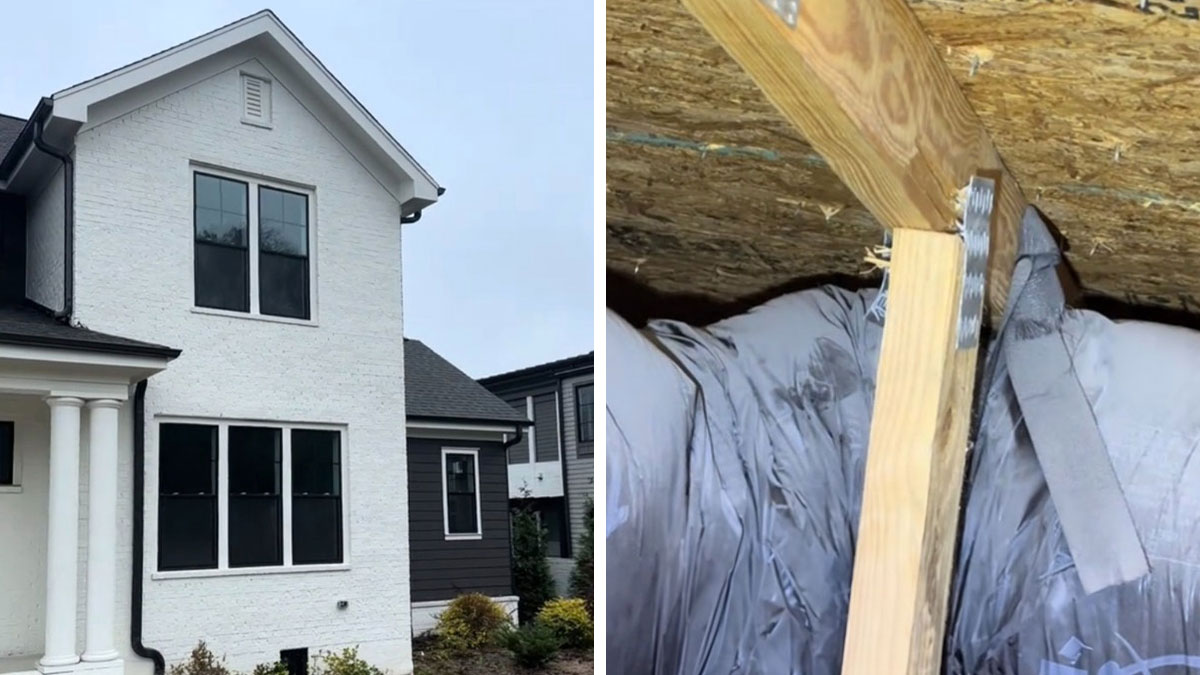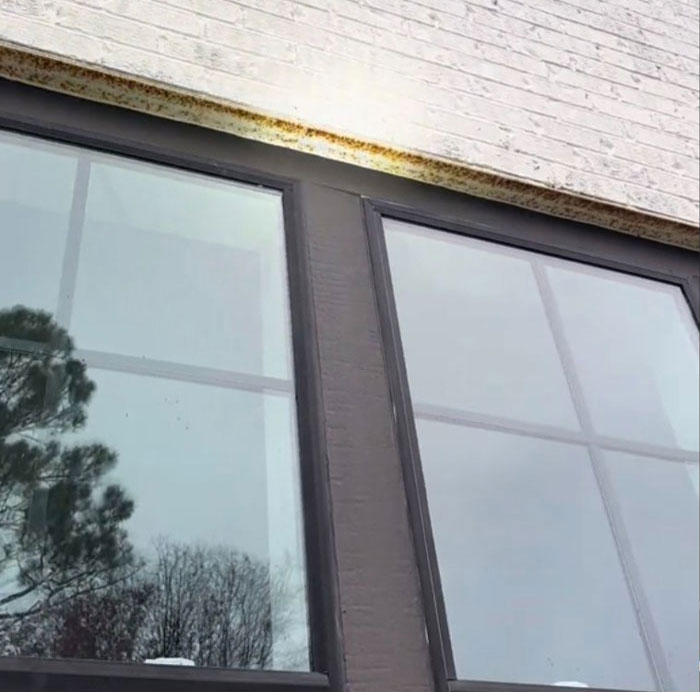The saying “Don’t judge a book by its cover” applies to different facets of life. A person who appears rough around the edges may actually be a sweetheart.
In the same way, an expensive, relatively new house with a luxurious facade may have interior defects that would turn off any potential buyer.
This is a reality that inspectors like Andrew Matson see regularly. His recent social media post shows the kind of home you can get for $1.6 million these days. Scroll down to find out.
Many expensive homes these days come with interior defects
Image credits: Pavel Danilyuk / Pexels (not the actual photo)
Charlotte-based inspector Andrew Matson recently showed a $1.6 million fixer-upper house
Image credits: andrew.matson7
“This home was built two years ago, 2022, $1.6 million. Let’s see what we’ve got going on”
Image credits: andrew.matson7
“Yep, this needs no explanation”
Image credits: andrew.matson7
“Looks like our steel lintels are beginning to corrode. As it corrodes, it expands and that leads to brick cracking”
Image credits: andrew.matson7
“I don’t know what’s going on there, that’s not good”
Image credits: andrew.matson7
“And one of our bath exhaust vents is already disconnected”
Image credits: andrew.matson7
“Looks like the caulk on our windows has begun to deteriorate already”
Image credits: andrew.matson7
“Caulk that side, caulk that side and then we got to the top and, well, our ladder didn’t go that high so we’re just going to stop”
Image credits: andrew.matson7
“Damaged window screen, that’s nice”
Image credits: andrew.matson7
“Always got to grab our railings make sure they’re nice and secure, but this one right here is not because the brick is moving”
Image credits: andrew.matson7
“Rear sliding door – the locks will not disengage, you can see this one’s bent and does not want to go back in its original path, something jacked up here”
Image credits: andrew.matson7
“No weather stripping on our exterior access door into this garage”
Image credits: andrew.matson7
“Our disposal is bound up, there’s something stuck inside there”
Image credits: andrew.matson7
“So that door runs into the air register, that’s nice”
Image credits: andrew.matson7
“This is just the icing on the cake, not even the doorbell works”
Image credits: andrew.matson7
“Don’t get me wrong the kitchen’s pretty, they even gave you a nice fake door into the pantry”
Image credits: andrew.matson7
Image credits: andrew.matson7
“Some gaps right there in the primary bathroom shower wall”
Image credits: andrew.matson7
“And what would this report be without some structural damage to our roof trusses”
Image credits: andrew.matson7
Here’s the full video he posted
@andrew.matson7 Let’s inspect this 1.6 million dollar home together! #homeinspection#realestate#realty#houses#construction#informative#educational#bluecollar#business#inspection#engineer#mansion♬ original sound – Andrew Matson
Image credits: AS Photography / Pexels (not the actual photo)
Shortcuts from contractors lead to interior defects in brand-new homes
The house Matson showed is just one of the many expensive homes with interior defects. It’s been happening in the US and the UK, causing concern among homeowners.
Experts point to a rising demand for building materials, which has led to skyrocketing prices. Many contractors resort to substituting cheaper and lower-quality options as a compromise.
“They’re less apt to correct the mistake by switching out the lumber or the product,” International Association of Certified Home Inspectors founder Nick Gromicko told Bankrate. “They’re more likely to patch.”
An inexperienced person may not easily spot a structural flaw in a home, but there are signs to look out for. According to Rockford Mutual Insurance Company, soil pulling away from the walls is one of them. It may mean that the foundation was incorrectly laid.
Uneven gaps on doors and windows are another indicator that isn’t easy to spot. But if you notice your doors and windows aren’t opening and closing as smoothly, it may be a sign that they are buckling under the pressure of carrying the weight of the house.
Image credits: Cytonn Photography / Pexels (not the actual photo)
Filing a lawsuit isn’t the advisable immediate response when finding defects in a newly constructed home
It is understandable to want to sue the builder for a poorly constructed home. However, it isn’t the advised immediate course of action.
As engineer and author James Dulley points out in a column for The Florida Times-Union, going the legal route right away may lead to thousands of dollars spent without guaranteeing a courtroom victory.
He advises listing all defects first and then studying local building codes in the area. Dulley says code violations are easily measured and quantified, making for a solid argument in court.
When filing a lawsuit, Dulley suggests omitting subjective defects, or those that don’t violate codes. These include unstable drywall joints and poorly done paint jobs, which may not be an acceptable argument for a judge.
Dulley recommends waiting it out before taking action, as the process takes a long time.
“Generally though, six months should be adequate time for the builder to get around to your complaints,” he wrote.
If anything, Matson’s video may serve as a precaution when considering purchasing a new home. It would be wise to scrutinize everything first or hire a professional with a trained eye to take a look.
As expected, commenters weren’t pleased with what they saw
Poll Question
Thanks! Check out the results:
So this would be 16,000,000 Swedish Krona. *Daydreams about what can be bought for that money here in Sweden*
Quite a bit more than this cardboard house, that’s for sure.
Load More Replies...So this would be 16,000,000 Swedish Krona. *Daydreams about what can be bought for that money here in Sweden*
Quite a bit more than this cardboard house, that’s for sure.
Load More Replies...
 Dark Mode
Dark Mode 

 No fees, cancel anytime
No fees, cancel anytime 




























































































32
20